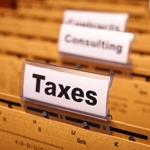
Many people make New Year’s resolutions in an effort to get a fresh start. Out with the old, in with the new. One of your resolutions may have been to get organized and clean up old financial or business-related paperwork. But you need to be careful when deciding what you can toss out versus what you should keep. As you go about your clean-up routine, consider these insights and best practices when it comes to your tax documents.
The IRS has strict rules for keeping tax returns and related documents. Under typical circumstances the IRS has up to three years from the date you file a return to choose to audit that return. Therefore, you should keep all relevant documentation supporting items claimed on your return for at least three years. This includes, but is not limited to, meal and gas receipts, credit card statements, bank account statements, mileage ledgers, and petty cash receipts.
The three year audit period can be increased to six years if the IRS believes you have understated your income by 25 percent or more. So in order to prove you
did not underreport, it’s a good idea to save those documents for six years. In addition, if you have purchased worthless securities or deducted a bad debt, you need to hold on to those records for seven years. For example, a 2010 return filed on October 15, 2011 that included a deduction for bad debt can be audited by the IRS until October 15, 2018.
There are some documents you may need to keep indefinitely. Retain property records for as long as you own the property and for three years after the sale. This includes receipts for major improvements, insurance claims, and mortgage refinancing. It is also wise to hold on to IRA documents and forms until the entire account has been drawn down. For more complicated issues like carryovers, it’s best to retain those records until seven years past the time the deductions are no longer relevant. Finally, there is no limit on the time you could be audited if the IRS suspects fraud.
You may want to consider converting all of these documents to an electronic format. You will save enormous amounts of space (no more bulky file cabinets or bankers’ boxes) as well as time. It’s much quicker and easier to locate and email electronic documents when requested by the IRS or other parties. There are several document imaging and scanning programs available for this purpose. It is also recommended that you have backup procedures in place, including external hard drive and/ or cloud storage.
Also, consider setting up a permanent file for all of your long-term documents. When you go to throw out or delete older tax year files not within the relevant tax year statute of limitations referenced above, moving them to a permanent file will avoid the possibility of inadvertently deleting important discrete documents located within the individual tax years. For instance, you may have purchased a home in 1999 and deducted costs in your 1999 return. If you decide to toss out year 1999 documents you may accidentally throw out your HUD-1 settlement sheet, which you’ll need as proof of adjusted basis when you eventually sell the home. By keeping a permanent file with all documents, you will have ready access to supporting records if and when you need them.
Along the same lines, make sure any documents you’re planning to toss won’t be needed for other reasons. You may have to provide financial statements and tax returns if you’re refinancing or applying for a mortgage. This is also true for loan applications. If you are sued, you could be required to provide tax returns, financial statements, mortgage applications, credit card statements, and bank registers. In a typical divorce, such documents are requested for the prior three years. Or, you may have college-age children who will need to complete a FAFSA form to get financial aid or loans.
One final tip: Make sure you properly shred any documents you decide to toss. In this age of ever-increasing cyber-crime and identity theft, you can never be too careful.
Carl G. Cardozo can be reached at Email or 215.441.4600.

